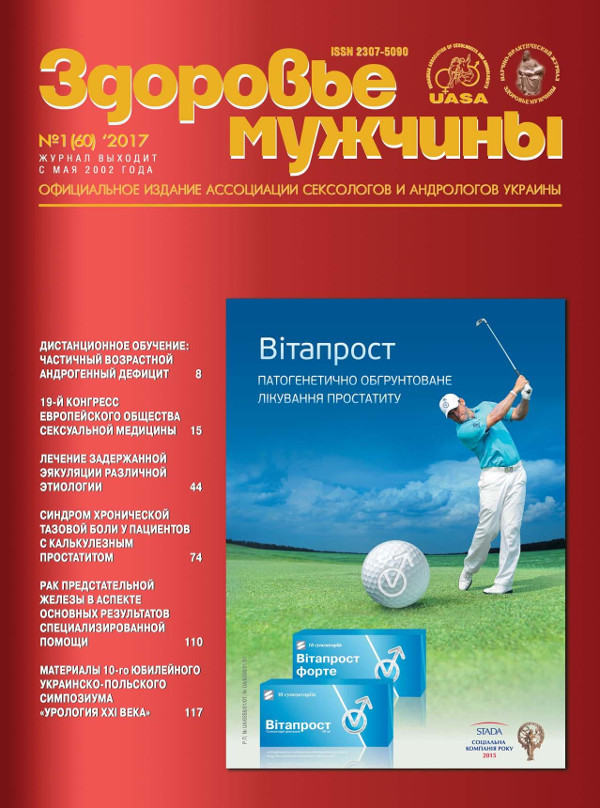Actual questions of nonhormonal stimulation of spermatogenesis in male infertility
##plugins.themes.bootstrap3.article.main##
Abstract
Recently, the issue of infertility is very relevant in our country. In this case, the male half of the falls about 50%.
The objective: to study the efficacy and safety of the use of the fertility complex Zeman in various forms of infertility.
Patients and methods. A retrospective research was undertaken with the aim to study the efficacy and safety of use of the fertility complex Zeman in various forms of infertility and the effects of the drug on the quality of semen. In 2012-2014, at the Ukrainian Institute of sexology and andrology (Kiev) was held the treatment of 1467 patients with the various forms of male infertility. The average age of men was 29.4 years (from 21 to 42 years). The 1st group included 630 patients with secretory infertility, the 2nd group included 510 in patients with excretory-toxic infertility, the 3rd group included 327 patients with idiopathic infertility. Patients with immunological infertility were not included in the study.
Results. According to the results of the treatment was observed a certain effect of monotherapy Zeman on the morphological and functional indices of sperm. Zeman is a multicomponent drug, which effectively can be used to treat all forms of infertility, in both mono-and combination therapy. Perception of Zeman is great during the long-term courses of use.
Conclusion. The result of a three-month course of monotherapy fertility complex Zeman became pregnancy in 214 couples regardless of the type of infertility. The maximum effect was observed in the group of excretory-oxic infertility, moderate effect was observed in patients with secretory infertility, minimal but clinically significant effect was observed in case of idiopathic infertility.
##plugins.themes.bootstrap3.article.details##

This work is licensed under a Creative Commons Attribution 4.0 International License.
Authors retain the copyright and grant the journal the first publication of original scientific articles under the Creative Commons Attribution 4.0 International License, which allows others to distribute work with acknowledgment of authorship and first publication in this journal.
References
Nieschlag E, & Behre HM (1997) Andrology – Male reproductive Health and Dysfunction. SpringerVerlag, Berlin, Germany.
Lipshultz LI, Howards SS (1997) Infertility in the Male. Mosby-Year Book, St Louis, USA.
Сексологія та андрологія / Під ред. акад. О.Ф. Возіанова та проф. І.І. Горпинченко. – К.: Здоров’я, 1996 р.
Glover TD, Barrat CLR (1999) Male fertility and Infertility. Cambridge University Press, Cambridge, UK.
Glover TD, Barrat CLR (1999) Male fertility and Infertility. Cambridge University Press, Cambridge, UK Pasqualotto FF, Locambo CV, Athayde KS, Arap S (2003) Measuring male infertility: epidemiological aspects. Rev. Hosp. Clin. Fac. Med. S. Paulo 58(3):173–178.
Pasqualotto FF, Pasqualotto EB, Sobreiro BP, Hallak J, Medeiros F, Lucon AM (2006) Clinical diagnosis in men undergoing infertility investigation in a university hospital. Urol Int 76(2):122–5.





